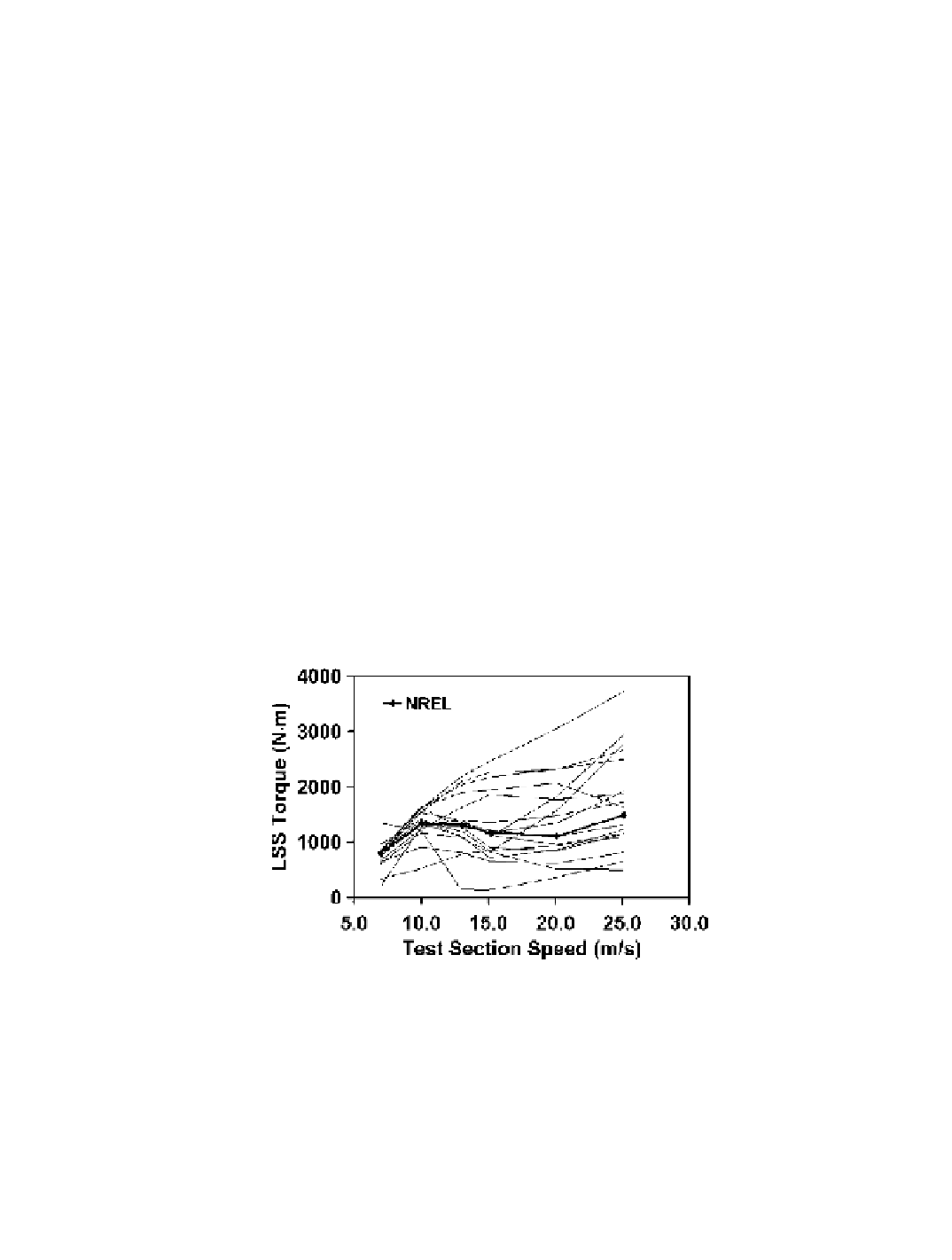Environmental Engineering Reference
In-Depth Information
In Europe, the three-bladed 4.5 m diameter
MEXICO
(Model Rotor Experiments In Con-
trolled Conditions) HAWT shown in Figure 5-44(b), sponsored by the European Union (EU),
was tested in the DNW an open section of the
Large Low Speed
(LLF) 9.5 m x 9.5 m wind
tunnel to address the same set of issues [Snel
et al.
2007]. The MEXICO blades included 3
different airfoil sections, with a
Delft
section near the root, an
NACA
section near the tip, and
a
Riso
section in between.
The U.S. and EU tests had in common several high level test goals and approaches,
which were balanced by subtle distinctions that enabled each experiment to compensate for
limitations in the other.
Evaluation of Aerodynamic Computer Codes
Data from the NREL/NASA Ames test of the UAE Phase VI wind turbine were em-
ployed as a reference standard in a blind code comparison exercise designed to evaluate the
accuracy and robustness of various wind turbine aerodynamics codes [Simms
et al
. 2001].
Participating in this exercise were over 30 aerodynamic specialists from 18 organizations,
including commercial companies, universities, and government laboratories in both Europe
and the U.S. The range of computer models encompassed
blade element momentum
(BEM)
models,
prescribed wake
models,
free wake
models, and
Navier-Stokes
codes.
Figure 5-45 shows the range of low-speed shaft (rotor) torques predicted by the par-
ticipants compared to the actual measured torques, which is typical of results of this code
comparison exercise. In general, unexpectedly large margins of disagreement were found
between code predictions and measured data, particularly in the post-stall operating regime
of the blades, at wind speeds above 10 m/s. Moreover, no consistent trends were apparent re-
garding the magnitudes or the directions of these deviations. These discrepancies highlighted
a pressing need for better understanding of the details of turbine blade aerodynamics, in order
to provide a solid physical basis for improving the accuracy of current rotor aerodynamic
codes in both the pre-stall and post-stall regimes.
Figure 5-45. Typical comparison of predicted and measured rotor low-speed shaft
(LSS) torques for the NREL UAE Phase VI wind turbine
vs.
airspeed in the test sec-
tion.
Over 30 aerodynamic specialists participated in this computer code evaluation exercise
[Simms
et al.
2001].

Search WWH ::

Custom Search